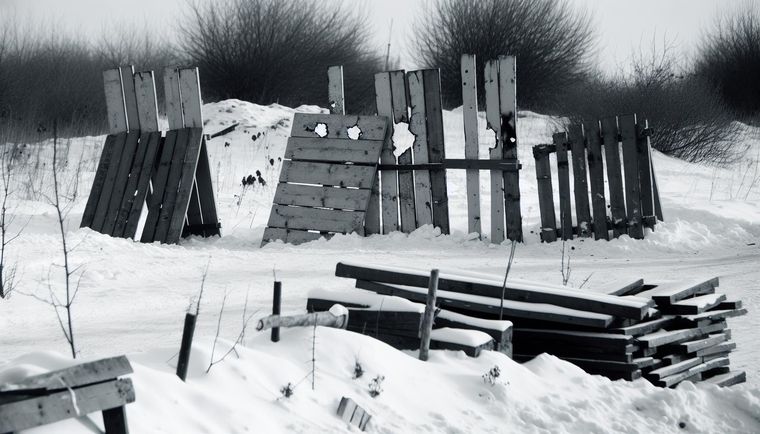The Tenuous Struggle for Safety in Northern Ukraine Amid Ongoing Conflict

The journey from the Ukrainian city of Sumy to the Russian border is deceptively short. In about three-quarters of an hour, one can arrive at a shattered Ukrainian border post and gaze across simple lines of fencing into Russian fields. However, the territory beyond is no longer under Kremlin control. The Sudzha crossing lies approximately five miles from the current frontline within Russia’s Kursk oblast. For the time being, it remains firmly in Ukrainian hands, even a week into a border incursion.
During a brief visit, the sounds that echoed through the air were the pops of outgoing artillery rather than the crumps of incoming shells. Military guards, tense and alert, stood with clips of rifle ammunition tucked into their chest pouches, barring any further progress into Russia. This territory, according to Ukraine's foreign ministry, is not one they seek to permanently occupy. Instead, the incursion is framed as a protective measure for their citizens—a move aimed at striking where the Russians are most vulnerable.
On the first day of Ukraine’s incursion, videos surfaced showing dozens of Russian border guards surrendering, caught off guard by a swift mobile assault. The border area bears the scars of ongoing conflict; while the Ukrainian side is visibly damaged, most of the destruction there predates this latest push. The most prominent signs of the incursion are remnants of debris pushed aside to make way for military maneuvers.
Eight days into the operation, Ukrainian military vehicles—marked with distinctive white-painted or taped triangles—continue to traverse the area, which is largely characterized by a lack of roads and untended fields. Reports from Ukrainian sources suggest that Kyiv has committed thousands of troops to this invasion, with a significant presence of armored vehicles observed in the region compared to other points in the past two-and-a-half years of conflict.
Despite this surge, reports from Ukrainian civilians in villages north of Sumy indicate that Russian air bombardments and shelling intensified immediately following the incursion's start on August 6. Nonetheless, tentative signs suggest that some Ukrainian territories are starting to experience reprieve from bombardment as Russian artillery lines push further back.
However, a lingering sense of dread remains in regions north and northwest of Sumy where the frontline persists. During a visit to the seemingly deserted village of Bilopillya, just six miles from the border, aid workers from Global Empowerment Mission encountered a group of elderly residents who quickly grabbed food packages with a sense of urgency before retreating—for many, the situation has become increasingly desperate.
Local resident Mykola Martinenko, 67, shared his grim reality of living in a basement next to a neighbor, highlighting the relentless nature of Russian shelling that has worsened since late April. He moved from the war-ravaged city of Mariupol to what he believed would be a quieter region, only to find himself amidst escalating conflict.
Inna, 31, from the mayor's office, described the unbearable situation with frequent powerful shelling, making the lives of families excruciatingly tense. She expressed her plan to evacuate with her two young children, striving to find safety beyond Sumy, stating, "It has become too loud. I’m scared for the children; they need to live a normal life."
Inna’s husband serves in the military, and while she endorses the Ukrainian incursion, her desperation is palpable: "It’s good they went in there, but I can’t put up with this suffering anymore."
The region's governor, Volodymyr Artyukh, reported that around 3,800 Ukrainians have fled the northern Sumy region in just the past week, leaving Bilopillya in a dire state of depopulation. Its mayor, Yuri Zarko, lamented the village's fate, recalling dreams of economic development that have been shattered by the ongoing invasion. Now hoping for NATO bases on the border, Zarko acknowledges that only young soldiers might help alleviate the population crisis left in the wake of war.
The ongoing conflict has drastically altered the fabric of life in northern Ukraine, forcing residents to navigate despair, survival, and the jarring reality of an existence dominated by uncertainty.
Related Sources:
